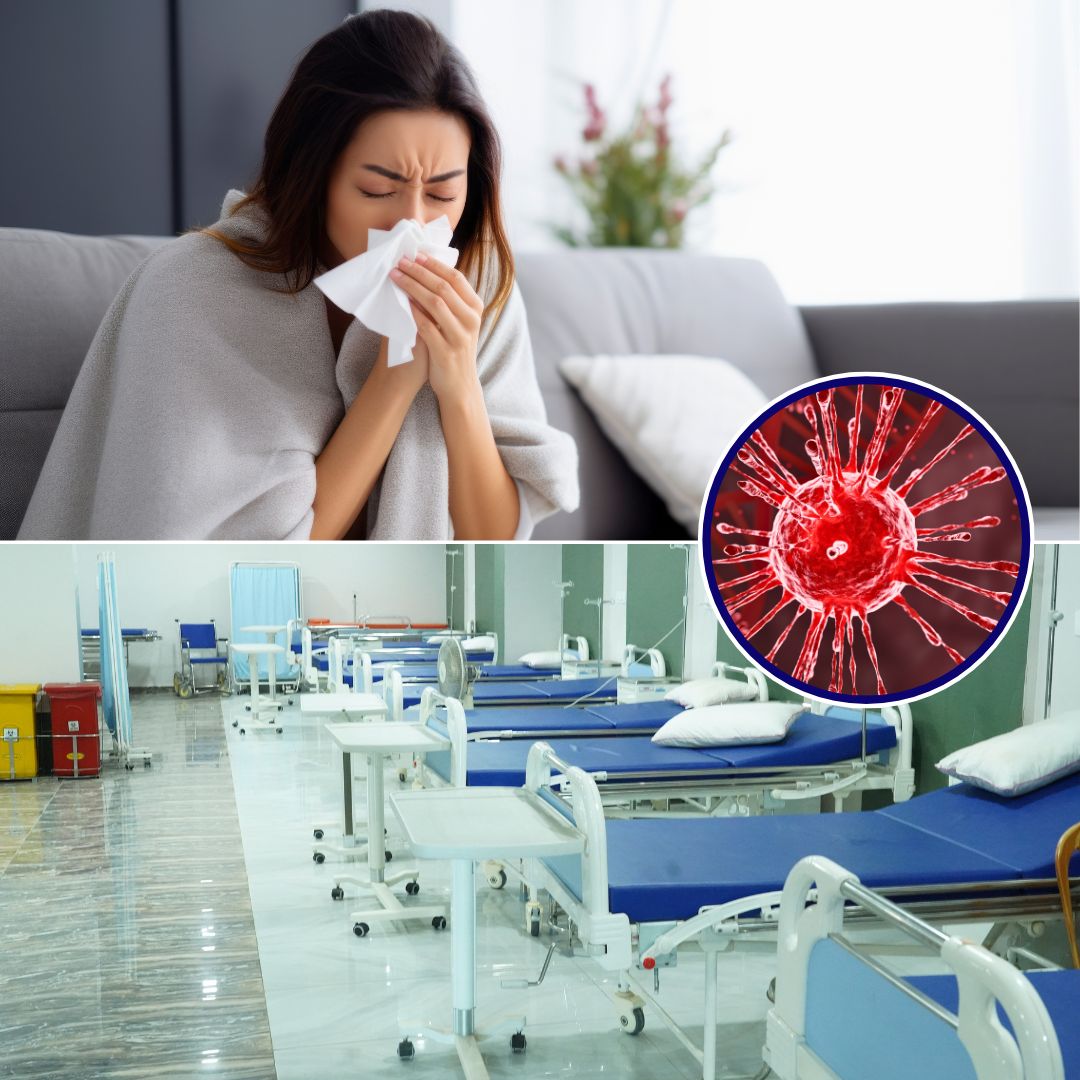Delhi and neighbouring NCR cities including Noida and Gurgaon are witnessing a surge in H3N2 flu cases marked by symptoms such as cough, fever, body aches, and prolonged fatigue. The increase, especially pronounced in September 2025, is affecting primarily children, the elderly, and people with underlying health conditions.
Hospitals report a high patient load, and local health experts urge continued precautions despite a slight decline in cases due to seasonal changes. Officials stress the importance of early symptom recognition and appropriate medical care to prevent complications.
Background: Seasonal Patterns and Growing Flu Impact
The surge coincides with the transition from monsoon to autumn, which facilitates the spread of respiratory viruses. A recent LocalCircles survey showed about 56% of households in Delhi NCR reporting at least one family member with flu-like symptoms, down from a peak of 69% ten days prior.
Experts highlight additional factors including post-pandemic immunity gaps and high pollution levels which have weakened respiratory defences among many residents. Healthcare providers are urging the public to practice hygiene, avoid crowded spaces, and seek timely medical treatment to reduce risks and hospitalisations.
Symptoms of H3N2 Influenza
The symptoms of the H3N2 flu strain are often more severe and prolonged compared to regular seasonal flu.
- Sudden onset of high fever (above 38°C or 100.4°F) and chills
- Persistent dry cough, which may become severe
- Sore throat and irritation in the throat
- Runny or blocked nose
- Muscle and body aches causing significant discomfort
- Headaches often accompanying the fever
- Fatigue and weakness lasting longer than common cold
- In some cases, nausea, vomiting, or diarrhoea (more common in children)
- Shortness of breath or wheezing in severe cases
- Chest tightness or pain requiring immediate medical attention
Causes and Transmission
H3N2 influenza is caused by a subtype of the Influenza A virus. According to a 2023 study published in the National Center for Biotechnology Information (NCBI), H3N2 evolves rapidly, leading to new strains that can evade existing immunity and vaccines. The virus primarily spreads through respiratory droplets released during coughing or sneezing, and through contact with contaminated surfaces.
Seasonal transitions with fluctuating temperatures, combined with Delhi NCR’s high pollution levels, create ideal conditions for the virus to propagate. The post-pandemic immunity gap, where reduced exposure to common pathogens has lowered community resistance, is also believed to contribute to the current spike.
Prevention and Protection Tips
Here are prevention tips for H3N2 flu:
- Eat a balanced diet rich in vitamin C, zinc, and antioxidants to boost immunity. (Source: 1mg)
- Get vaccinated annually with the flu vaccine covering H3N2 to reduce risk and severity of illness.
- Wash hands frequently with soap and water for at least 20 seconds or use alcohol-based hand sanitizer.
- Wear masks in crowded or poorly ventilated places to reduce airborne transmission.
- Avoid close contact with anyone showing flu symptoms like cough, fever, or body ache.
- Maintain good respiratory hygiene by covering your mouth and nose while coughing or sneezing.
- Disinfect frequently touched surfaces regularly such as doorknobs, phones, and switches.
- Stay home and rest if you develop flu symptoms to avoid spreading the virus.
The Logical Indian’s Perspective
The rise in H3N2 flu cases in the NCR region is a reminder of the need for collective responsibility in public health. The Logical Indian calls for continued awareness, empathy towards vulnerable populations, and support for healthcare workers managing the surge. Encouraging good hygiene, vaccination uptake, and compassionate care are critical to easing pressures on hospitals and ensuring community wellbeing.
Disclaimer: The information provided in this article is intended solely for informational and educational purposes and should not be considered professional medical advice. It is not a substitute for consultation, diagnosis, or treatment by a qualified healthcare provider. Readers are advised to seek prompt medical attention for any health concerns or symptoms.












